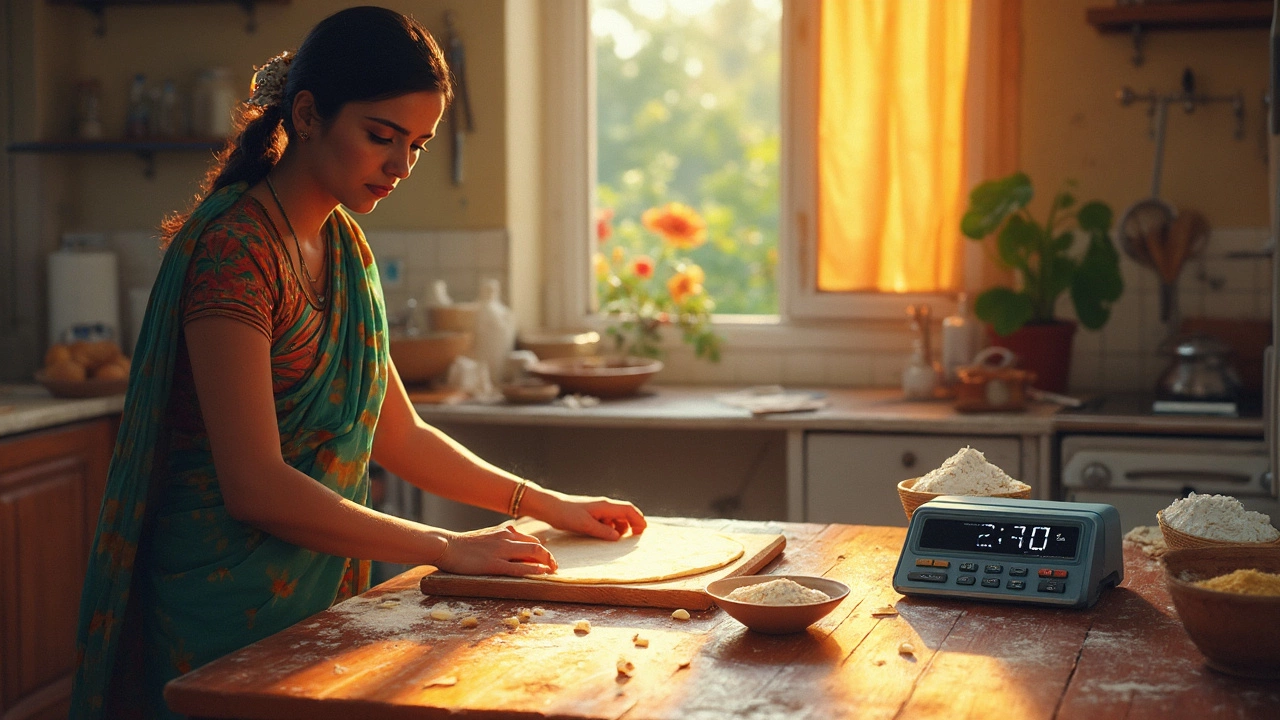Daily Chapatis: Master the Art of Perfect Indian Flatbread
When working with daily chapatis, soft, round Indian flatbreads cooked on a hot griddle. Also known as daily roti, they form the staple of most Indian meals and require the right mix of technique and ingredients. Roti, the broader category of unleavened wheat breads, shares the same dough but can vary in thickness and puff. Oil in dough, a simple addition, dramatically boosts softness and flavor. Baking soda, a pinch added to the mix, helps achieve a lighter texture and quicker puffing.
Daily chapatis encompass the art of roti making, which requires a balanced dough, proper rolling, and hot cooking. The dough’s moisture level, often tweaked by adding oil, determines how easily the chapati spreads without tearing. Adding a dash of baking soda introduces carbon dioxide during cooking, which creates tiny air pockets and encourages the chapati to puff up. When the dough is rested, gluten relaxes, making rolling smoother and resulting in an even surface that cooks uniformly. These steps together form a simple chain: good dough leads to easy rolling, which leads to a hot tawa, which finally yields a soft, puffy chapati.
Key Techniques and Common Pitfalls
If your chapatis are staying flat, the first thing to check is the dough consistency. Too dry dough resists stretching and cracks, while overly wet dough sticks to the rolling board. A common fix is to add a teaspoon of oil while kneading—this keeps the dough supple and promotes a tender crumb. Another often‑overlooked factor is the heat of the tawa; a medium‑high temperature gives the chapati that quick burst of steam needed to puff. Yet many cooks wait until the surface dries before flipping, which can prevent puffing. A quick flip as soon as you see small bubbles appear usually does the trick.
Seasoned home cooks also experiment with flour types. Whole wheat flour adds nutrition but can make the chapati denser; mixing in a small portion of all‑purpose flour lightens the texture. Some add a pinch of baking soda for a softer bite, especially when making chapatis for children. However, too much soda can give a metallic taste, so keep it under ¼ teaspoon per kilogram of flour. Finally, storing chapatis in a clean kitchen towel retains moisture, keeping them soft for hours.
These insights tie back to the main themes you’ll find in the posts below: why roti sometimes fails to puff, how oil timing influences softness, and the science behind baking soda in flatbreads. Whether you’re a beginner learning the roll‑and‑cook rhythm or an experienced cook tweaking minor details, the collection offers practical advice you can apply right away.
Now that you’ve got the basics of daily chapatis, dive into the articles ahead to uncover deeper troubleshooting tips, ingredient hacks, and step‑by‑step guides that will help you serve perfect chapatis at every meal.

How Many Calories in a Roti? Use This Simple Calculator
Understanding the calories in a roti is vital for anyone looking to manage their diet, especially in India where rotis are a staple. This article provides a simple guide to calculating the calories in one roti and offers insights on how many chapatis you should consume per day based on your Body Mass Index (BMI). Whether you're aiming to maintain, lose, or gain weight, a personalized calorie calculator can be your best friend in this journey.